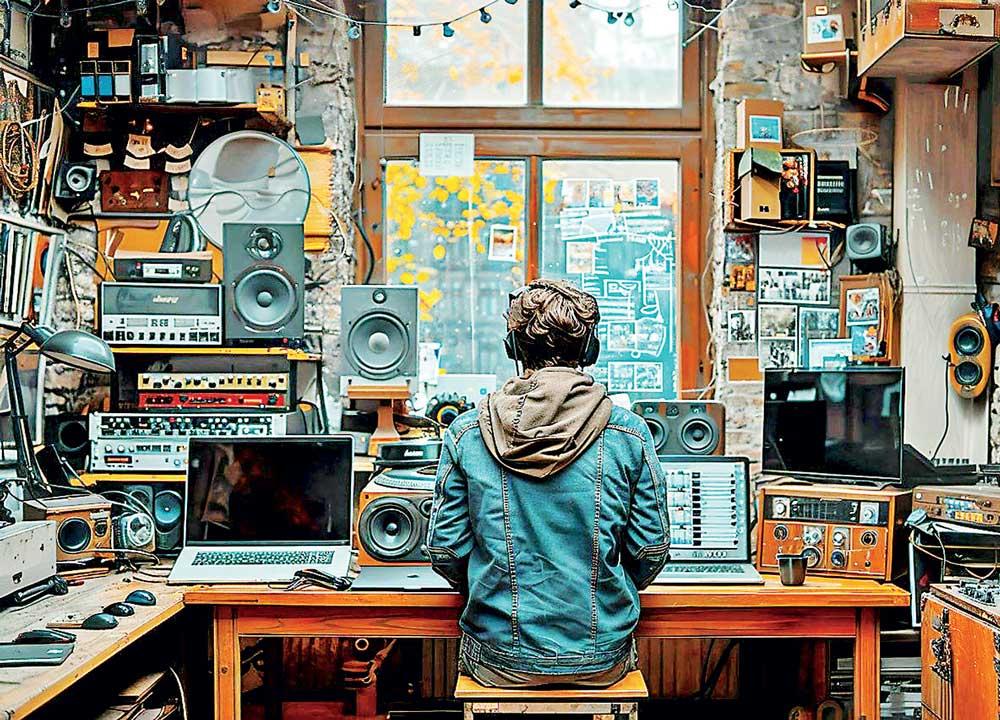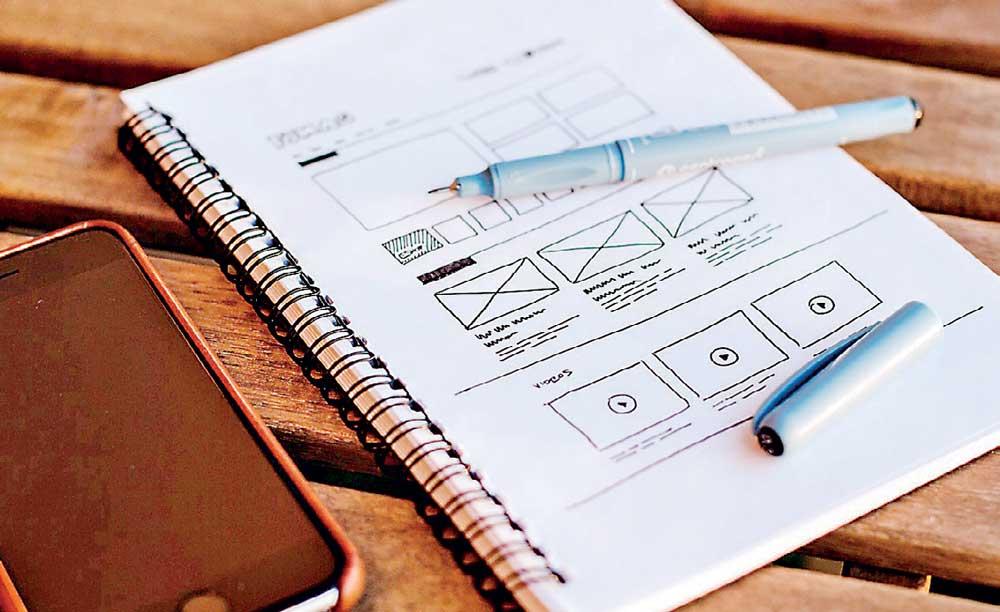02 Jul 2024 - {{hitsCtrl.values.hits}}

Many graphic designers express concern about the platform’s impact on their industry. Some argue that Canva’s templates and pre-designed elements encourage a homogenisation of design, potentially stifling creativity and originality. Others point out that it falls short when it comes to more complex projects.
 Canva, founded by Melanie Perkins in 2012, revolutionised graphic design by making it accessible to everyone. Frustrated with complex design software, Perkins created this user-friendly platform to simplify visual content creation. Today, Canva offers intuitive tools and templates for various design needs, from social media to marketing materials. But what exactly is Canva, and how has it reshaped the graphic design industry?
Canva, founded by Melanie Perkins in 2012, revolutionised graphic design by making it accessible to everyone. Frustrated with complex design software, Perkins created this user-friendly platform to simplify visual content creation. Today, Canva offers intuitive tools and templates for various design needs, from social media to marketing materials. But what exactly is Canva, and how has it reshaped the graphic design industry?
User Experience and Accessibility
One of Canva’s most lauded attributes is its accessibility. Unlike traditional graphic design software that often requires a steep learning curve, Canva’s drag-and-drop functionality allows users to create polished designs within minutes. This ease of use has made it particularly popular among small business owners, social media managers, and educators who need to produce professional-looking content quickly and efficiently.
Impact on Professional Graphic Designers
Many graphic designers express concern about the platform’s impact on their industry. Some argue that Canva’s templates and pre-designed elements encourage a homogenisation of design, potentially stifling creativity and originality. Others point out that while Canva is excellent for basic designs, it falls short when it comes to more complex projects that require advanced techniques and customisation.
Despite these concerns, there’s no denying Canva’s ability to produce professional-quality designs for many everyday needs. From social media posts to business cards, the platform offers a level of polish that was once only achievable with more sophisticated software. However, limitations become apparent when users attempt more intricate designs or need to adhere to specific brand guidelines that require pixel-perfect precision.
Cost and Affordability: Canva’s pricing model has played a significant role in its widespread adoption. The platform offers a free version with access to a substantial array of features and templates, while its Pro version unlocks additional functionality at a fraction of the cost of traditional design software subscriptions. This affordability has made Canva an attractive option for small businesses and freelancers operating on tight budgets.
Educational Impact: The educational impact of Canva cannot be overstated. Many schools and universities have incorporated the platform into their curriculum, using it to teach basic design principles and visual communication skills. This integration has democratised design education, allowing students from various disciplines to gain valuable skills that were once limited to those pursuing formal design degrees.
Market Trends and Statistics
Market trends indicate a growing preference for DIY design tools, with Canva leading the pack. As of 2024, Canva boasts over 100 million monthly active users across 190 countries, with a valuation that has soared into the billions. These statistics underscore the platform’s significant market share and its potential to shape the future of design.
Ethical Considerations
However, the widespread use of Canva has raised ethical considerations, particularly regarding copyright and intellectual property. While Canva provides a vast library of licensed content, users must be cautious about using images or elements that may infringe on copyrights. The platform has implemented measures to educate users about proper usage and attribution, but the responsibility ultimately lies with the individual creator.
Future Outlook
Looking to the future, Canva shows no signs of slowing down. The platform continues to innovate, incorporating AI-driven design suggestions and expanding its collaborative features. As Canva evolves, it may further blur the lines between professional and amateur design, potentially reshaping the role of graphic designers in the long term.
As the debate continues, one thing is clear: Canva has irreversibly changed the landscape of graphic design. Whether it’s viewed as a democratising force or a potential threat to the industry, its impact will continue to shape how we approach visual communication in the years to come. As with any disruptive technology, the key lies in adapting to the changing landscape while recognising the enduring value of professional expertise and creativity in design.

Community Voices

As a designer, Canva is great for simple stuff, but sometimes it feels like everyone’s using the same templates. Makes everything look a bit cookie-cutter. And while it’s easy to use, for super detailed projects, it just doesn’t cut it. Plus, I worry people might think design is easy because of Canva, which undervalues what we actually do. Don’t get me wrong, it’s a handy tool, but it can’t replace the real deal! Just gotta be careful about copyright stuff too, you see a lot of questionable uploads these days.
Ravindu Perera, Graphic Designer

There’s a certain finesse to professional design that Canva just can’t replicate. We don’t just pick colours and fonts; we understand colour theory, typography, hierarchy, and visual communication. It’s like the difference between using a microwave and crafting a gourmet meal. Both fill a need, but there’s a skill and artistry to creating something exceptional. Honestly, Canva isn’t a threat. It empowers people to handle basic design needs themselves, which is great! But not everyone has the eye for design or the patience to learn the intricacies. That’s where we come in. We bring creativity, technical expertise, and the ability to translate complex ideas into visuals that truly connect.
JD, Graphic Designer

I’ve been using Canva for about three years, starting with creating worksheets. Even with a free account, I found it incredibly user-friendly and versatile. I was able to design and complete several beginner-level Arabic language workbooks with ease. Over time, I expanded my use of Canva to create flyers, posters for advertisements, and even logos. Canva has become my go-to tool for any editing or design needs. Its simplicity and range of features make it indispensable for both personal and professional projects.
Fathima Nusra Najeeb, Student

Canva is awesome for social media posts and flyers, but try building a website or crafting a unique brand identity with it? No way. There’s a reason we spend years honing our skills; design is about so much more than dragging and dropping pre-made elements. It’s about understanding nuance, and user experience, and creating something truly unique that resonates with the target audience.
Charini Widanagamage, Graphic Designer

In my opinion, Canva is not a threat to designers but rather a significant help for them. For beginners in design, it’s the best platform to learn, as it really makes things easier. I have used Canva for many of my projects, and it has never failed me. Whenever I need to design something quickly, my first option is to go to Canva. It has all the elements you need for designing, unlike other software where you have to search and download particular elements to use in your designs. Canva is user-friendly and is the best platform for beginners.
Asna Zulfiquar, Creative Multimedia Undergraduate

Most of the time I use Photoshop or Illustrator for most of my design work. However, I use Canva when I have to do something really quick because there are already premade templates and it’s better for some repetitive tasks. For example, I can design the background in Photoshop or Illustrator, and then make text changes and other adjustments in Canva, which is easier to work with and faster.
Shalik Rizni,
Co-Founder & CEO of Toggle Digital

Canva’s rise doesn’t scare me; it excites me! It opens design up to a wider audience and demonstrates its value. Now, more people understand the power of good design, which can only benefit the industry in the long run. It just means we have to adapt and showcase the unique value professional designers bring to the table.
Haritha Paul, Graphic Designer
26 Dec 2024 2 hours ago
26 Dec 2024 2 hours ago
26 Dec 2024 3 hours ago
26 Dec 2024 3 hours ago
26 Dec 2024 4 hours ago